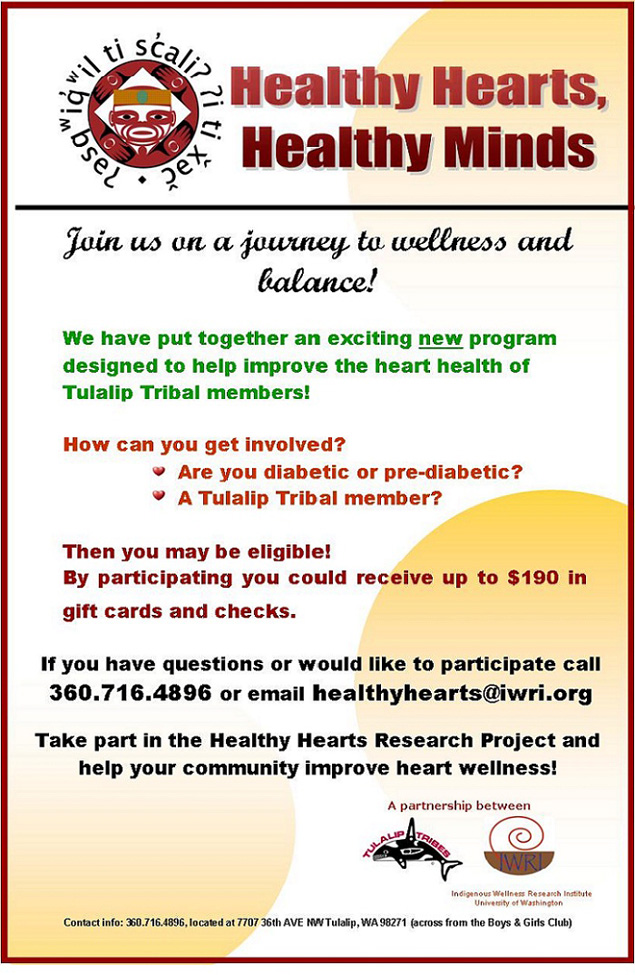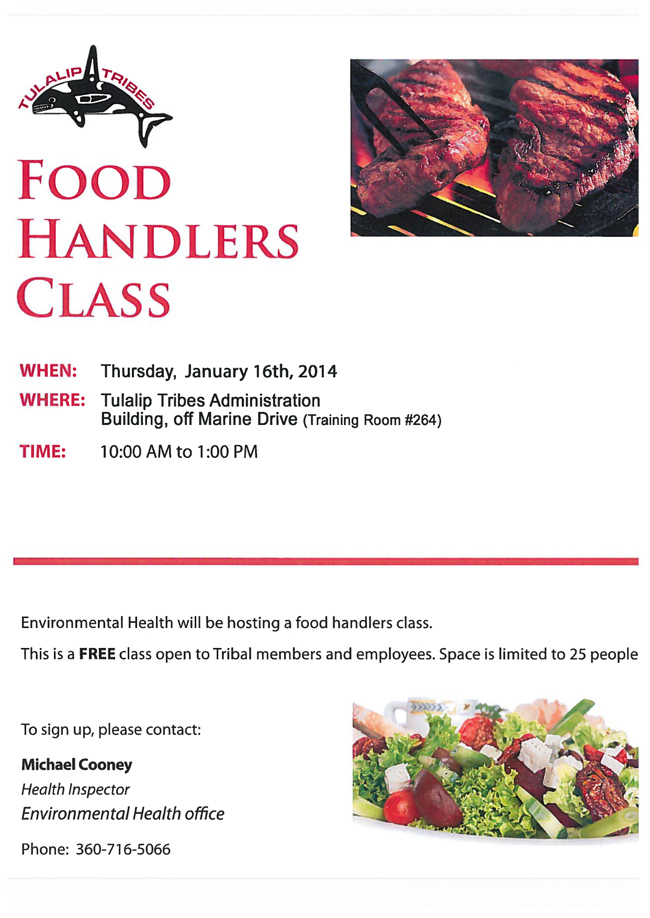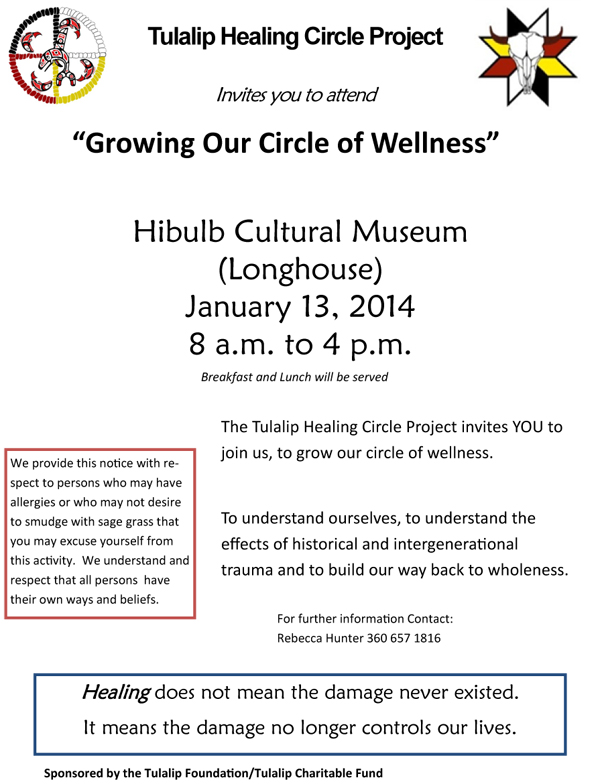The new Healthy Hearts, Healthy Minds Project is looking for participants! If you are interested or would like to know more about the project please call (360)716-4896.
Category: Health
GMO labeling debate shifts to Olympia
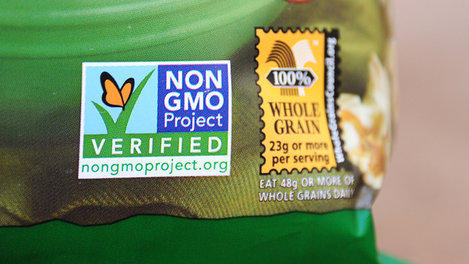
by Associated Press
January 17, 2014
SEATTLE — Months after Washington voters narrowly rejected an initiative requiring labeling of genetically modified foods, lawmakers are reviving the GMO debate in Olympia.
One bill would require labeling genetically engineered salmon for sale, even though federal regulators have not yet approved any genetically modified animals for food. Another bill requires many foods containing GMOs to carry a label.
The debate comes as the U.S. Department of Agriculture is considering approval of an apple engineered not to brown. The U.S. Food and Drug Administration is also weighing an application for a genetically modified salmon that grows twice as fast as normal.
In Olympia, a public hearing is scheduled Friday in the House Committee on Agriculture & Natural Resources on the bill. That measure also would prohibit genetically engineered finfish from being produced in state waters
Google contact lens could be option for diabetics

This undated photo released by Google shows a contact lens Google is testing to explore tear glucose. After years of scalding soldering hair-thin wires to miniaturize electronics, Brian Otis, Google X project lead, has burned his fingertips so often that he can no longer feel the tiny chips he made from scratch in Google’s Silicon Valley headquarters, a small price to pay for what he says is the smallest wireless glucose sensor that has ever been made. (AP Photo/Google)
January 16, 2014 Martha Mendoza AP
MOUNTAIN VIEW, Calif. (AP) – Brian Otis gingerly holds what looks like a typical contact lens on his index finger. Look closer. Sandwiched in this lens are two twinkling glitter-specks loaded with tens of thousands of miniaturized transistors. It’s ringed with a hair-thin antenna. Together these remarkable miniature electronics can monitor glucose levels in tears of diabetics and then wirelessly transmit them to a handheld device.
“It doesn’t look like much, but it was a crazy amount of work to get everything so very small,” he said before the project was unveiled Thursday.
During years of soldering hair-thin wires to miniaturize electronics, Otis burned his fingertips so often that he can no longer feel the tiny chips he made from scratch in Google’s Silicon Valley headquarters, a small price to pay for what he says is the smallest wireless glucose sensor ever made.
Just 35 miles away in the beach town of Santa Cruz, high school soccer coach and university senior Michael Vahradian, 21, has his own set of fingertip callouses, his from pricking himself up to 10 times a day for the past 17 years to draw blood for his glucose meter. A cellphone-sized pump on his hip that attaches to a flexible tube implanted in his stomach shoots rapid-acting insulin into his body around the clock.
“I remember at first it was really hard to make the needle sticks a habit because it hurt so much,” he said. “And there are still times I don’t want to do it _ it hurts and it’s inconvenient. When I’m hanging out with friends, heading down to the beach to body-surf or going to lunch, I have to hold everyone up to take my blood sugar.”
The idea that all of that monitoring could be going on passively, through a contact lens, is especially promising for the world’s 382 million diabetics who need insulin and keep a close watch on their blood sugar.
The prototype, which Google says will take at least five years to reach consumers, is one of several medical devices being designed by companies to make glucose monitoring for diabetic patients more convenient and less invasive than traditional finger pricks.
The contact lenses were developed during the past 18 months in the clandestine Google X lab that also came up with a driverless car, Google’s Web-surfing eyeglasses and Project Loon, a network of large balloons designed to beam the Internet to unwired places.
But research on the contact lenses began several years earlier at the University of Washington, where scientists worked under National Science Foundation funding. Until Thursday, when Google shared information about the project with The Associated Press, the work had been kept under wraps.
“You can take it to a certain level in an academic setting, but at Google we were given the latitude to invest in this project,” Otis said. “The beautiful thing is we’re leveraging all of the innovation in the semiconductor industry that was aimed at making cellphones smaller and more powerful.”
American Diabetes Association board chair Dwight Holing said he’s gratified that creative scientists are searching for solutions for people with diabetes but warned that the device must provide accurate and timely information.
“People with diabetes base very important health care decisions on the data we get from our monitors,” he said.
Other non-needle glucose monitoring systems are also in the works, including a similar contact lens by Netherlands-based NovioSense, a minuscule, flexible spring that is tucked under an eyelid. Israel-based OrSense has already tested a thumb cuff, and there have been early designs for tattoos and saliva sensors.
A wristwatch monitor was approved by the FDA in 2001, but patients said the low level electric currents pulling fluid from their skin was painful, and it was buggy.
“There are a lot of people who have big promises,” said Dr. Christopher Wilson, CEO of NovioSense. “It’s just a question of who gets to market with something that really works first.”
Palo Alto Medical Foundation endocrinologist Dr. Larry Levin said it was remarkable and important that a tech firm like Google is getting into the medical field and that he’d like to be able to offer his patients a pain-free alternative from either pricking their fingers or living with a thick needle embedded in their stomach for constant monitoring.
“Google, they’re innovative, they are up on new technologies, and also we have to be honest here, the driving force is money,” he said.
Worldwide, the glucose-monitoring devices market is expected to be more than $16 billion by the end of this year, according to analysts at Renub Research.
The Google team built the wireless chips in clean rooms and used advanced engineering to get integrated circuits and a glucose sensor into such a small space.
Researchers also had to build in a system to pull energy from incoming radio frequency waves to power the device enough to collect and transmit one glucose reading per second. The embedded electronics in the lens don’t obscure vision because they lie outside the eye’s pupil and iris.
Google is now looking for partners with experience bringing similar products to market. Google officials declined to say how many people worked on the project or how much the firm has invested in it.
Dr. David Klonoff, medical director of the diabetes research institute at Mills-Peninsula Health Services in San Mateo, worked with Google to see whether glucose is present in tears and whether the amount of glucose is proportional to the amount of glucose in blood. He’s still analyzing but optimistic about his findings and warns there are many potential pitfalls.
“Already this has some breakthrough technologies, but this is a moonshot, there are so many challenges,” he said.
One is figuring out how to correlate glucose levels in tears as compared with blood. And what happens on windy days, while chopping onions or during very sad movies? As with any medical device, it would need to be tested and proved accurate, safe, and at least as good as other types of glucose sensors available now to win FDA approval.
Karen Rose Tank, who left her career as an economist to be a health and wellness coach after her Type 1 diabetes diagnosis 18 years ago, also is encouraged that new glucose monitoring methods may be on the horizon.
“It’s really exciting that some of the big tech companies are getting into this market,” she said. “They bring so much ingenuity; they’re able to look outside the box.”
___
Follow Martha Mendoza at https://twitter.com/mendozamartha
IHS Confused Whether Indian Diabetes Funding Faces Another Sequestration
1/16/14 ICTMN.com
For the second year in a row, Indian Health Service (IHS) leadership is confused how federal sequestration will impact its budget, leading to questions of responsibility and competency from Native-focused health officials.
The latest confusion centers on how the Special Diabetes Program for Indians (SDPI), a program created in 1997 by Congress for the prevention and treatment of diabetes in American Indian and Alaska Natives, will be affected under the new federal budget deal. The December congressional arrangement alleviates sequestration on many so-called discretionary Indian-focused programs, but it leaves cuts in place for some mandatory programs.
SDPI last year was classified as mandatory under White House Office of Management and Budget (OMB) rules, so the program received a 2 percent cut, translating to $3 million. That reduction was able to be absorbed by IHS through an internal reshuffling of funds, according to agency officials last year.
This year, under the budget deal hammered out for 2014 by Democratic and Republicans congressional negotiators in December, mandatory programs would be subject to the same cut. As of December 24, 2013, IHS officials believed that SDPI would face the same cut as last year, and agency leadership was communicating that information to Indian health officials and to the press. An IHS spokeswoman told Indian Country Today Media Network by e-mail on December 24 that “SDPI has been sequestered by 2 percent again as other mandatory health programs.” A question at that time left unanswered was whether IHS would be able to absorb the $3 million shortfall, as it had in 2013.
Fast forward to mid-January, with IHS now telling Indian health officials that it doesn’t know if SDPI will be subject to sequestration in 2014. They also told Indian health officials on January 15 that the agency does not know when they would have more information on this issue.
When asked by ICTMN again on January 16 if SDPI would be subject to sequestration and if so whether IHS would be able to administratively pick up the slack as it did last year, Dianne Dawson, a spokeswoman for IHS, said that the Office of Management and Budget (OMB) should be contacted for details on the 2014 budget.
OMB has not responded to requests for comment, but one thing is for sure: IHS leadership is no stranger to accusations of not knowing how federal sequestration affects their budget. Yvette Roubideaux, acting director of the agency, told Indian health officials at various tribal meetings and in letters throughout 2011 and early 2012 that “the worst-case scenario would be a 2 percent decrease from current funding levels” for IHS under sequestration, rather than the 9 percent that was forecasted for most federal agencies if the sequester went into effect. But that information was a misreading of the law, according to OMB, and IHS ended up being subject to higher levels of sequestration.
RELATED: A Miscalculation on the Sequester Has Already Harmed Indian Health
Indian health officials were outraged that Roubideaux had fed them wrong information, and they said it cost them the ability to prepare tribal budgets to help make up for the greater shortfall. They were also concerned with OMB’s interpretations of the law.
Questions over this issue and others involving lacking tribal consultation, transparency and funding issues have caused Democratic senators to hold up Roubideaux’ re-nomination to her director position. She has been reduced to acting capacity, which has reduced morale in the agency, according to Indian-focused officials who have discussed the situation with IHS staff.
RELATED: 6 New Year Nomination Battles for Obama’s Native-Focused Nominees
Given the new confusion surrounding the SDPI program and sequestration in 2014, Indian health officials are again angry with IHS leadership and are demanding clarification.
“I am not sure what IHS is doing anymore; we have hardly any transparency when it comes to IHS budget issues with this director and administration,” said Jim Roberts, a policy analyst with the Northwest Portland Indian Health Board, when asked about the SDPI situation in December. “I’ve never seen budget and administrative transparency worse in the history of the agency despite its mantra and their espousal that this is their priority.”
From Roberts’ own reading of the law, he says that if Congress does its job and stays within the allocation caps reached under the December budget deal, there should not be a two percent reduction to the general IHS appropraition.
National Indian Health Board officials say they are investigating the situation with the agency.
Seeking Safety Drop In Group
Toxic Waters, Part 2: Focus Should Be Clean Up, Not Do Not Eat, Tribal Leaders Say
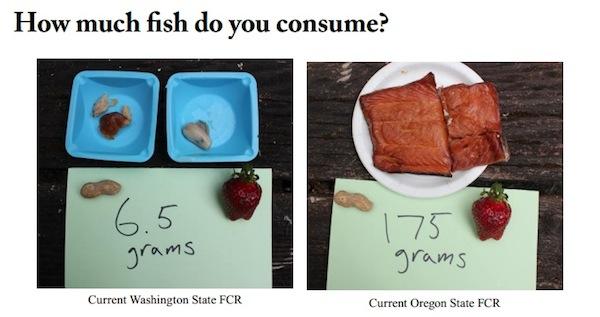
The problems associated with contamination in Northwestern waters are mounting.
For years the many contaminants in Washington State waterways have prompted the state’s Department of Health to issue official warnings against eating Washington fish too frequently. Washington currently has fish consumption advisories issued throughout the state.
“The tribes are not only interested in protecting all the species of fish they eat, but they’re also concerned about protecting their economic interests,” said Ann Seiter, fish consumption rate coordinator for the Northwest Indian Fisheries Commission.
RELATED: Toxic Waters: Consumption Advisories on Life-Giving Year-Round Fish Threaten Health
Tribes are calling for major changes in pollution policy. When health officials from Washington and Oregon issued advisories for mid-Columbia River’s resident fish last September due to elevated mercury and PCB levels, tribal leaders were outraged.
“The focus should not be ‘Do not eat’–it should be ‘Clean up’–the Columbia River,” said Yakama Nation Chairman Harry Smiskin in a statement at the time.
The Umatilla, Yakama, Nez Perce and Warm Springs tribes urged the governors of Washington and Idaho to update water quality standards and fish consumption rates.
“The tribes believe that the long-term solution to this problem isn’t keeping people from eating contaminated fish—it’s keeping fish from being contaminated in the first place,” Columbia River Inter-Tribal Fish Commission Chairman Joel Moffett said in a statement. “Armed with higher fish consumption rates and water quality standards, we hope there will be a greater motivation to remove pollutants from the Columbia River and its tributaries.”
Washington has also issued a lower Columbia advisory that warns of PCBs, DDT and Dioxin as well as other compounds. To the state’s east, an advisory has been issued for the Spokane River, which is contaminated with PCBs, lead and other harmful materials. There is also a statewide mercury advisory.
Washington and Idaho are reevaluating their fish consumption rates, which are used to calculate water quality standards that protect human health. The four Oregon tribes urged Washington and Idaho to adopt at least the same rate that Oregon uses to establish water quality standards protective of all fish consumers in the region, according to the White Salmon Enterprise.
Oregon’s 175-grams-per-day suggested consumption is a more accurate representation of how much fish most of Oregon’s residents actually eat. But even that does not go far enough, tribal leaders say. State and federal governments must act to clean the polluted sections of the Columbia River contaminating fish, Smiskin said.
“The fish advisories confirm what the Yakama Nation has known for decades,” Smiskin said. “State and federal governments can no longer ignore the inadequacy of their regulatory efforts and the failure to clean up the Columbia River.”
The Yakama Nation repeatedly identified contaminated sites along the Columbia, expressing concerns for the health and culture of the Yakama people and calling upon the state and federal agencies for cleanup actions that would protect the tribe’s resources, retained by them in the Treaty of 1855.
“The new advisories once again pass the burden of responsibility from industry and government to tribes and people in the region,” Smiskin said. “Rather then addressing the contamination, we are being told to reduce our reliance on the Columbia River’s fish. This is unacceptable.”
Read more at http://indiancountrytodaymedianetwork.com/2014/01/12/toxic-waters-part-2-focus-should-be-clean-not-do-not-eat-tribal-leaders-say-153049
Food Handlers Class at Tulalip, January 16
Be Prepared in 2014: Make Preparedness Part of Your New Year
From Darryl Madden, Director of FEMA Ready Campaign
For many, the New Year is a time for setting goals and making new resolutions for the year to come. If you are anything like me, each year you find yourself resolving to achieve a healthier lifestyle – eating right, exercising more, losing a few pounds.
Setting personal health goals in the New Year is great, but improving overall well-being involves taking actions to be prepared. Knowing what to do in an emergency is vital to the health and safety of you and your loved ones.
This year, the Ready Campaign is challenging you to be Prepared in 2014. Start the New Year by connecting with family and friends on the importance of preparedness. Not only can the information shared potentially save a life, connecting with those you love has an added benefit. People who have strong social connections tend to be healthier and more resilient.
I know the hardest part of keeping a resolution is sustaining it after those first few weeks of the year, but you don’t have to do it all at once.
First, start by simply having the conversation: who to call, where to meet and what to pack in an emergency.
Build your family’s emergency supply kit by picking up recommended emergency items over the first month or two of the year.
Create a preparedness checklist. This should include things such as emergency phone numbers and copies of important documents, and information on how to register for programs such as the American Red Cross Safe and Well website.
Set reminders throughout the year to talk about and update your family emergency communication plan. If you have children, include them in conversations and planning activities. The Ready Campaign has age-appropriate tools and resources you can use to introduce disaster preparedness to them. And you can learn more about talking with kids after disasters so you’re ready to help them through tough situations.
Have pets? Make sure they are a part of your planning process. Create a pet go-bag to help keep them safe during an emergency. Find helpful tips from FEMA on how to plan for your furry friends
Older adults often have special needs in a disaster and may depend on medications or other special requirements. If older adults are a part of your social connection, be sure to include them in your preparedness planning efforts.
Emergencies can and will happen, but being ready can minimize the impact they have on the overall well-being of you and your family.
This year, make disaster preparedness part of your New Year’s resolution. On January 1st 2014, join the Resolve To Be Ready Thunderclap to promote a message of preparedness to your social connections on New Year’s Day. Don’t forget to use the hashtag #Prepared2014 whenever you discuss family preparedness on Twitter.

